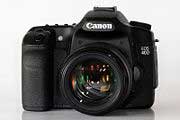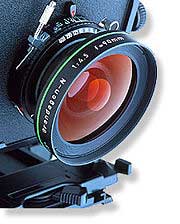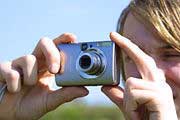   |
| Photography Info Directory |
| Provide all information about knowledge ; Technology , Photography , Fashion & Models, Sport , Automotive , Health , Life Style , Bussiness , News , E-comers |
| Home / Aeromodeling Info directory / News From The Worlds |
Technology / Photography / Fashion & Models / Sport / Automotive / Health / Life Style / Bussiness / News / Galery Photo / Politics |
| Photography Info List : |
| Photography Galery |
| Photography History |
| Photography Knowledge |
| Copyright www.knowledgeinfodirectory.50webs.com @ 2008 / Privacy Policy / Contact us by Email / Send us your article |
   |
Photographic camerasThe camera or camera obscura is the image-forming device, and photographic film or a silicon electronic image sensor is the sensing medium. The respective recording medium can ibe the film tself, or a digital electronic or magnetic memory. Photographers control the camera and lens to "expose" the light recording material (such as film) to the required amount of light to form a "latent image" (on film) or "raw file" (in digital cameras) which, after appropriate processing, is converted to a usable image. Modern digital cameras replace film with an electronic image sensor based on light-sensitive electronics such as charge-coupled device (CCD) or complementary metal-oxide-semiconductor (CMOS) technology. The resulting digital image is stored electronically, but can be reproduced on paper or film.The controls usually include but are not limited to the following........ read more |
Uses Of PhotographyPhotography gained the interest of many scientists and artists from its inception. Scientists have used photography to record and study movements, such as Eadweard Muybridge's study of human and animal locomotion in 1887. Artists are equally interested by these aspects but also try to explore avenues other than the photo-mechanical representation of reality, such as the pictorialist movement. Military, police, and security forces use photography for surveillance, recognition and data storage. Photography is used to preserve memories of favorite times, to capture special moments, to tell stories, to send messages, and as a source of entertainment. Commercial advertising relies heavily on photography and has contributed greatly to its development. |
Hystory Of PhotographyPhotography is the result of combining several technical discoveries. Long before the first photographs were made, Ibn al-Haytham (Alhazen) (965–1040) invented the camera obscura and pinhole camera,[1] Albertus Magnus (1193–1280) discovered silver nitrate, and Georges Fabricius (1516–1571) discovered silver chloride. Daniel Barbaro described a diaphragm in 1568. Wilhelm Homberg described how light darkened some chemicals (photochemical effect) in 1694. The fiction book Giphantie (by the French Thiphaigne de La Roche, 1729-1774) described what can be interpreted as photography......read more |
Photography Types "Black-and-white photography"All photography was originally monochrome, or black-and-white. Even after color film was readily available, black-and-white photography continued to dominate for decades, due to its lower cost and its "classic" photographic look. It is important to note that some monochromatic pictures are not always pure blacks and whites but contain other hues depending on the process. The Cyanotype process produces an image of blue and white for example. Many photographers continue to produce some monochrome images. Some full color digital images are processed using a variety of techniques to create black and whites, and some cameras have even been produced to exclusively shoot monochrome. (See also Monochrome Photography).....read more about colour photography |
Digital photographyMain article: Digital photography , See also: Digital versus film photograph Traditional photography burdened photographers working at remote locations without easy access to processing facilities, and competition from television pressured photographers to deliver images to newspapers with greater speed. Photo journalists at remote locations often carried miniature photo labs and a means of transmitting images through telephone lines. In 1981, Sony unveiled the first consumer camera to use a charge-coupled device for imaging, eliminating the need for film: the Sony Mavica. While the Mavica saved images to disk, the images were displayed on television, and the camera was not fully digital. In 1990, Kodak unveiled the DCS 100, the first commercially available digital camera....read more |
Photography as an art formDuring the twentieth century, both fine art photography and documentary photography became accepted by the English-speaking art world and the gallery system. In the United States, a handful of photographers, including Alfred Stieglitz, Edward Steichen, John Szarkowski, and Edward Weston, spent their lives advocating for photography as a fine art. At first, fine art photographers tried to imitate painting styles. This movement is called Pictorialism, often using soft focus for a dreamy, 'romantic' look. In reaction to that, Weston, Ansel Adams, and others formed the f/64 Group to advocate 'straight photography', the photograph as a (sharply focused) thing in itself and not an imitation of something else....read more |